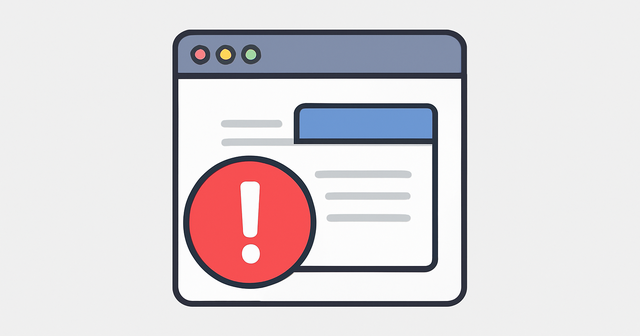Scrum Guide Expansion Pack (2025): Key Insights You Need to Know

A new building block has been added to the Scrum Guide to enrich it! Does it offer real value, or is it just window dressing? Read on to find out in this article written by one of our experts.
Scrum Guide Expansion Pack: A Quick Summary
On June 11, 2025, Jeff Sutherland, the co-creator of Scrum, published the "Scrum Guide Expansion Pack". Rather than being a new version of the 2020 Scrum Guide, this document is a supplement to it, designed to enrich and clarify existing Scrum practices. It introduces clarifications, deeper explorations of certain concepts, and optional additions, particularly regarding product strategy, artificial intelligence, and outcome-focused approaches.
Key Takeaways from the Scrum Guide Expansion Pack
The 2020 Scrum Guide was written to preserve the essence of agility and Scrum, maintaining it as a minimalist framework. However, this approach has sometimes proven insufficient in complex product or project contexts involving AI, very short delivery times, numerous stakeholders, and an ever-evolving product strategy.
This pack is therefore aimed at experienced Scrum teams looking for supplementary information and a richer work framework, without abandoning Scrum's core simplicity.
The Expansion Pack covers several key areas:
1. Complementary Theories
Considering Global Context: Understanding interdependencies and long-term effects in a complex environment; citing analysis tools to define the degree of complexity of a context; reinforcing Lean thinking to eliminate waste.
Adaptive Leadership: Encouraging Scrum Masters to become leaders who can guide without controlling in a changing world. Scrum Masters are officially designated as the carriers of change, transformation, and team adaptability, in addition to their facilitation role.
Product Thinking and Continuous Discovery: A reminder of the need to center the team on the producing value, continuous exploration, and learning about the product. This includes using tests to verify new hypotheses, measure results, and aid in value-driven product steering.
Human Change and Learning Principles: Taking into account the dynamics of individual and collective change to promote sustainable adoption and create a favorable learning environment initiated by the Scrum Master and co-created with the entire team.
Multi-team and Scaling: Encouraging the sharing of the same backlog, the same Product Goals, and learning from lived experiences.
2. Clarifications on Artifacts and Commitments
Reinforced Definition of Goals (Product Goal, Sprint Goal): These are not mere formalities; they must genuinely guide decisions and give meaning to the work of all stakeholders. They establish a common objective and directive and allow for progress measurement.
Clarification of the Link Between "Definition of Done," Deliverables, and Outcomes: The connection is clarified between what is delivered (output: velocity, technical quality, volume of items, etc.) and the value actually obtained (outcome: delivered product value).
Highlighting Backlog Refinement, Often Underestimated: Rehabilitated as a crucial moment for preparing clear, estimable, and prioritized items—too often neglected. Backlog refinement should allow everyone to exchange ideas, gain understanding, and challenge the tickets, expressed needs, and their content.
3. New Roles
Stakeholders: They are present and visible, and they are an integral part of the dynamic. They were previously mentioned, but not as an official role.
Supporters: They facilitate or assist the work without being part of the Scrum Team. Previously, this notion was only referenced as "management" or "the organization" within which the team worked.
AI (Artificial Intelligence): Recognized as an actor in certain contexts, with defined responsibilities. This includes using AI to delegate certain tasks or check the consistency of the team's work, such as prioritization and the content of written tickets.
Product Developer: This enriches the concept of the Dev Team. The Dev Team is composed of Product Developers, with an emphasis placed on their role and responsibilities.
4. Precisions on Events
Recentering on the Objective of Each Event: Every event should serve to inspect, adapt, and create concrete feedback, not just "complete a ritual." It is important to embody the Agile values and principles—of which Scrum is a part—when holding these events..
Focus on Sustainable Cadence and Advance Preparation: Emphasize the importance of regularity, discipline, and thorough preparation for valuable events. Lean thinking reinforces this aspect by aiming to eliminate wasted energy and time.
Scrum Guide Expansion Pack: Pros and Cons
Pros:
Enriches the understanding of the framework without complicating its core fundamentals.
Targets more advanced teams facing strategic issues.
Allows for adaptive reading: you leverage what is useful, when you need it.
More closely aligned with real-world scenarios and the complexity found in businesses.
Cons:
May seem verbose or theoretical for novice teams.
Risk of "Scrum-therapy" if misunderstood: attempting to intellectualize everything without practical foundation.
Sparks debate over the place of AI as a designated "role."
What Does It Mean for Teams Already Working with Scrum?
There's no need to panic; nothing in this pack is mandatory. The Expansion Pack is supplementary material for those who find the standard Scrum Guide insufficient or want more information. It invites you to revisit your Scrum practices with valuable reminders and additions.
Specifically, it may lead a team to:
Redefine how they conceptualize their Sprint Goals.
Better involve their stakeholders.
Ask more specific questions about the actual outcomes produced (and not just the deliverables).
Question their stance on AI and the associated risks they are willing (or unwilling) to accept (e.g., verification/validation processes).
Scrum Guide Expansion Pack: Is Implementation Mandatory?
No, the Expansion Pack is optional and does not provide direct value on its own. Rather than replacing the Scrum Guide, it enriches understanding for those who wish to delve deeper. Each team is free to draw inspiration from it, depending on its context, maturity, and specific challenges.
Conclusion
The Scrum Guide Expansion Pack 2025 is a positive development for teams practicing Scrum and new learners. It demonstrates the growing maturity of the framework, alongside a constant questioning and adaptability to real-world situations. This type of update provides a prime opportunity to challenge your practices, the results obtained, and to contextualize them against the initial objectives. Personally, I fully endorse it, especially the optional nature of certain included concepts. What about you?
Sources: https://scrumexpansion.org/



